Some people consider dandelions to be beautiful flowers. But for others, they’re annoying weeds. And it often depends on where you find them.
There are more than 250 different types of dandelions. Which type is growing in your yard?
We’ve prepared a list with pictures to help you identify your dandelions.
Common Types Of Dandelions
These are some of the most common types of dandelions you’ll find growing in your yard:
Common Dandelion (Taraxacum Officinale)
Taraxacum officinale is one of the most common lawn weeds. You’ll notice them blooming in the spring. Usually, common dandelions grow low to the ground. But they can reach up to 18-inches in height.
Common dandelions have long narrow leaves with toothed lobes. With the leaves growing up to 8-inches long and 1-inch across. It’s common to find that the undersides of the leaves are hairy, which is particularly noticeable at the midrib. But sometimes they’re completely smooth on both sides.
You can identify this type of weed by its bright yellow flower at the end of a hollow stalk. Which turns into a seed puff of small olive-colored seeds.
Taraxacum officinale is an edible weed. You can eat every part of the common dandelion apart from the seeds. And some people use the root to make dandelion tea.
Horned Dandelion (Taraxacum ceratophorum)
Taraxacum ceratophorum by Jim Morefield from Nevada, USA, CC BY-SA 2.0, via Wikimedia Commons
Horned dandelion is also called alpine dandelion. It’s a native dandelion to North America. And you’ll usually find it growing in mountainous regions, spreading through meadows, and sprouting in the gaps between rocks.
The plant can grow 1-10 stems. And features a large flowering head of yellow florets and lobed green leaves that are sometimes coarsely toothed. The leaves are more delicate than the common dandelion and have rounded tips. You’ll also see horn-like bracts on the flower head.
Pink Dandelion (Taraxacum pseudoroseum)
Taraxacum pseudoroseum by Noobnarwal, CC BY-SA 4.0, via Wikimedia Commons
The pink dandelion is originally a native of central Asia. But you can now find it growing in many parts of the world. You can find it growing in meadows, along roadsides, and around forest margins. You can identify this dandelion by its pretty pink flowers which have an apricot-colored center.
Pink dandelions are a popular type of dandelion with gardeners. They’re easy to grow. And are a good choice for natural landscaping. The plant grows well in full sun to partial shade. And flowers from May to October. Attracting pollinators such as butterflies into your garden.
Red Seeded Dandelion (Taraxacum erythrospermum)
It’s common to find the red seeded dandelion blooming on your lawn between April and June. The weed grows in both shady and sunny locations, and likes to grow in undisturbed soil.
Red-seeded dandelions grow in a variety of conditions. From dry rocky areas to waterlogged and marshy ground. And you can find this dandelion weed growing all across the world.
Red-seeded dandelion has leaves that grow up to 10-inches long and 2-inches wide. With leaf lobes that are more triangular than those on the common dandelion. The pointed tips of the leaves are curved.
Aside from the leaves, it’s easiest to distinguish red-seeded dandelion from common dandelion by its reddish-brown seeds.
Red-seeded dandelion is edible. And it’s considered to have health benefits, helping with various ailments.
Korean Dandelion (Taraxacum platycarpum)
Taraxacum platycarpum by ILBONG NAM, CC0, via Wikimedia Commons
The Korean dandelion flowers between March and May, and sometimes in late fall. You’ll usually see this type of dandelion along roadsides and cultivated areas. The leaves are similar to common dandelion with deeply lobed leaves growing up to 8-inches long.
Korean dandelion has a slightly downy stalk. And the dandelion grows up to 12-inches tall, topped with a flower head of numerous small florets. The plant usually blooms in Spring. But sometimes it happens in late fall.
You’ll mostly find this type of dandelion in Korea. But it also grows in Japan and China. All parts of this dandelion weed are edible. And it’s used in a variety of ways in Korean cuisine.
Taraxacum Albidum
This dandelion species is a native of Eastern Eurasia and you’ll sometimes find it in the South of Japan. You can identify Taraxacum albidum by its flower head of white florets that bloom each year between March and May and occasionally in the fall.
The basal rosette consists of deeply lobed green leaves. In the summer, the dandelion leaves wither to avoid being damaged in the higher temperatures.
Taraxacum albidum is mostly found growing beside roads and cultivated fields. And the dandelion grows in a range of soil conditions, as well as full sun and partial shade.
Russian Dandelion (Taraxacum Kok-saghyz)
Russian dandelion is also known as rubber root and Kazakh dandelion. You’ll find this dandelion plant growing in Uzbekistan, Kazakhstan, Kyrgyzstan, and Western China. It prefers growing in sunny locations in meadows and around mountainous areas, in acidic or neutral soil.
Russian dandelion has leaves that are very similar to common dandelion. But you can tell the difference as the leaves are usually smaller and grey-green. They’re also not quite as narrow and are rounded at the end.
The flower is a similar yellow flower. But this variety of dandelion has horn-like structures on the bracts surrounding it. The weed flowers from May to June, and the seeds ripen in June and July.
Russian dandelion can be used for producing high-quality rubber from the root which contains 15% latex.
California Dandelion ( Taraxacum californicum)
The California dandelion is native to North America, but it’s currently an endangered species. As the name suggests, you’ll find it growing in southern California. Where it grows in wet mountain meadows year-round apart from a period of dormancy in the winter.
This small perennial wildflower looks similar to the common dandelion. The weed has green leaves with toothed lobes and red veins. And a fluffy seed head with brown seeds. The dandelion blooms from May to August with a familiar yellow flower.
Japanese Dandelion (Taraxacum Japonicum)
You’ll usually see this dandelion weed growing in sunny locations around Japanese paddy fields and roadsides. Japanese dandelion flowers from March to May, producing a single yellow flower that looks very similar to common dandelion, except it doesn’t consist of as many florets.
Fleshy Dandelion (Taraxacum carneocoloratum)
Taraxacum carneocoloratum by Denali National Park
People sometimes refer to this dandelion as pink dandelion on account of its pale peachy or pink-purple flower head.
You can find fleshy dandelion growing at between 500-2500 meters above sea level on alpine ridge crests, areas of gravel, and scree slopes. And occasionally you’ll see fleshy dandelion in flood plains and river terraces that are well-drained.
This kind of dandelion is commonly found in Alaska and the Yukon Territory.
Fasciated Dandelions
Fasciated dandelion by Limulus, CC BY-SA 3.0, via Wikimedia Commons
Fasciated dandelions are not a unique type of dandelion as such. But you may come across them and this will help you identify what you’re looking at.
Fasciation is a deformity. It can be caused by genetic mutation, infection by virus or bacteria, or environmental factors. Fasciated dandelions have thick stems and large flower heads that look as if a number of dandelion stalks have grown bundled together.
Common Similar Plants
These similar-looking flowering plants are often called dandelions, but they don’t belong to the Taraxacum family:
Desert Dandelion (Malacothrix glabrata)
The desert dandelion is similar in appearance to the common dandelion. But it prefers to grow in different conditions. You’ll find the desert dandelion growing in the Sonoran, Mojave, and Great Basin deserts. Especially after heavy rains in the winter, when it quickly grows in large carpets of flowers.
The flower head is a slightly paler color than the common dandelion. And you can easily identify this plant by the bright red at the center of the flower.
False Dandelion (Hypochaeris radicata)
Hypochaeris radicata by James Petts from London, England, CC BY-SA 2.0, via Wikimedia Commons
Also known as flatweed and catsear, false dandelion takes its name from the fact that it’s commonly mistaken for a dandelion.
False dandelion is a perennial weed that’s originally from Eurasia. But it’s now found in most parts of the world, growing in a range of soil conditions. You’ll often find it in grass lawns and fields, beside roads, and in disturbed areas.
The plant produces yellow flower heads that mature and form seed puffs that are similar to dandelions. And it has green, lobed leaves that can grow up to 8-inches long. Similar to a dandelion, the leaves form a rosette around a central taproot.
FAQ
Are there any poisonous dandelions?
Dandelion leaves are not poisonous when eaten in normal amounts. And dandelion greens are often eaten in soups and salads. But there are cases of children becoming ill after eating dandelion stems, which contain a milky latex. The leaves are also high in oxalates, which can cause harm when consumed in large quantities.
Are there different color dandelions?
Dandelions usually have a yellow flower and green leaves. But you can also find dandelions with different colors. Dandelion flowers can be pink, white, pale peach, and pink-purple, depending on the species. And the purple-leaved dandelion (Taraxacum rubifolium) has burgundy/maroon leaves.
Are pink dandelions real?
Pink dandelions are real. Most dandelions have yellow flowers. But, there are some dandelions that have pink flowers. Species of dandelions that have pink flowers include Taraxacum pseudoroseum and Taraxacum carneocoloratum.
Do dandelions have any poisonous look-alikes?
None of the dandelion look-alikes are poisonous. You can eat all of them. People mostly focus on the leaves as they are the tastiest and most nutritious part. And they sometimes provide other health benefits such as medicinal properties.
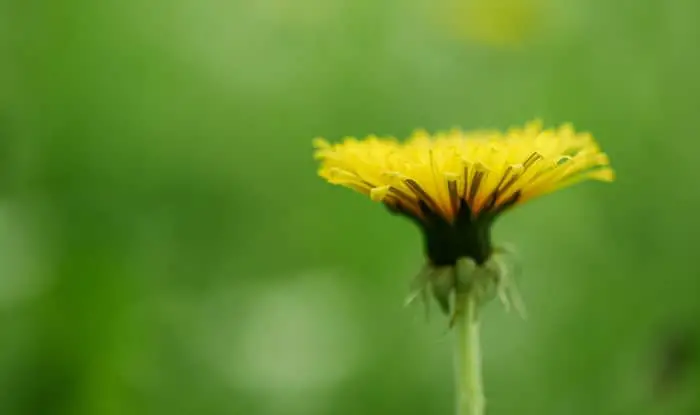

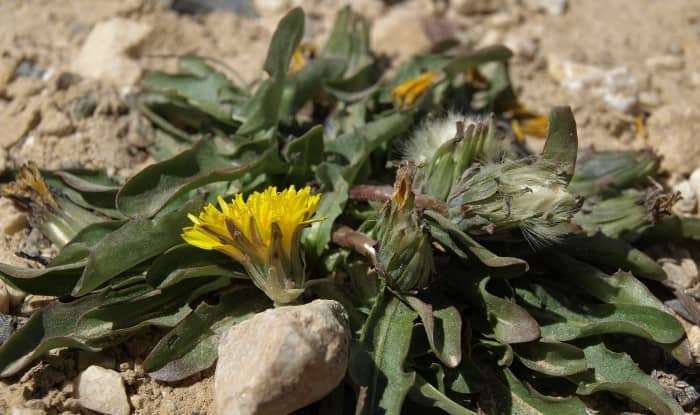
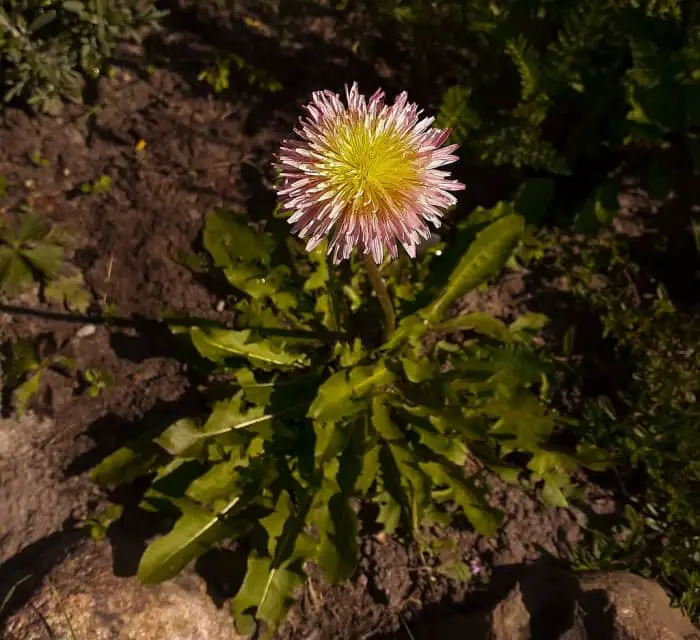


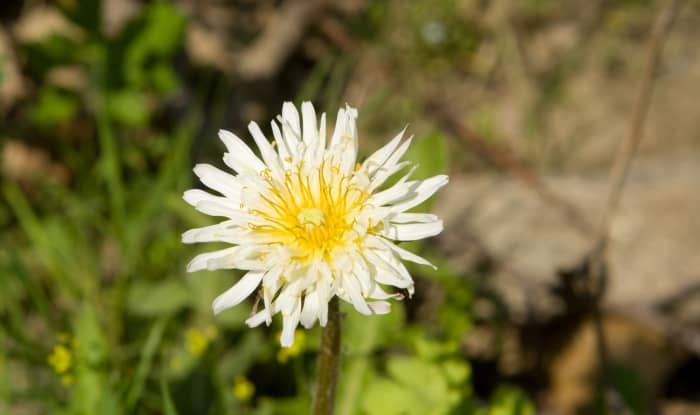
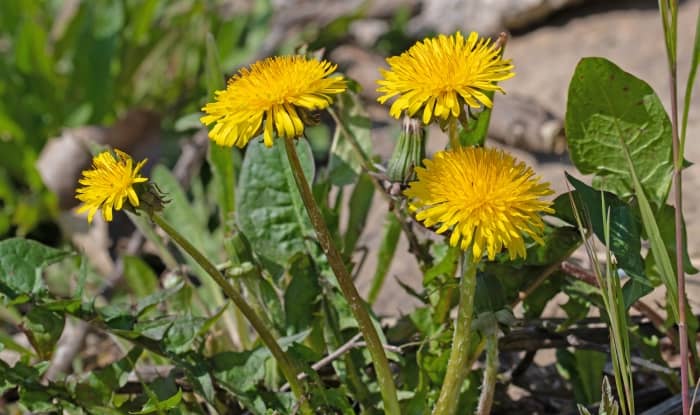
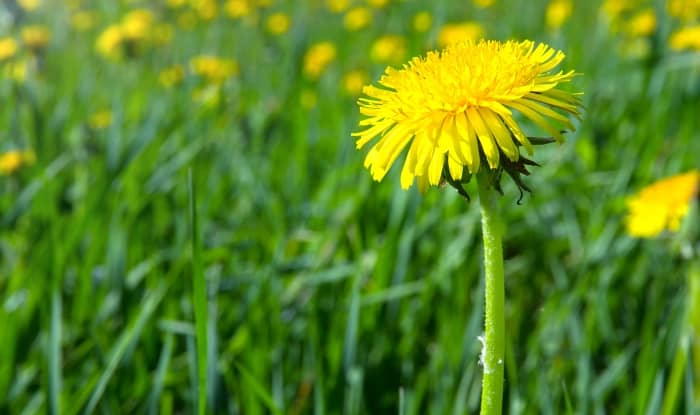
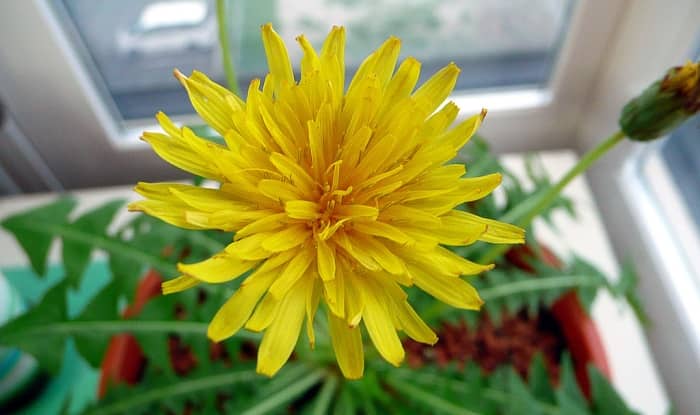
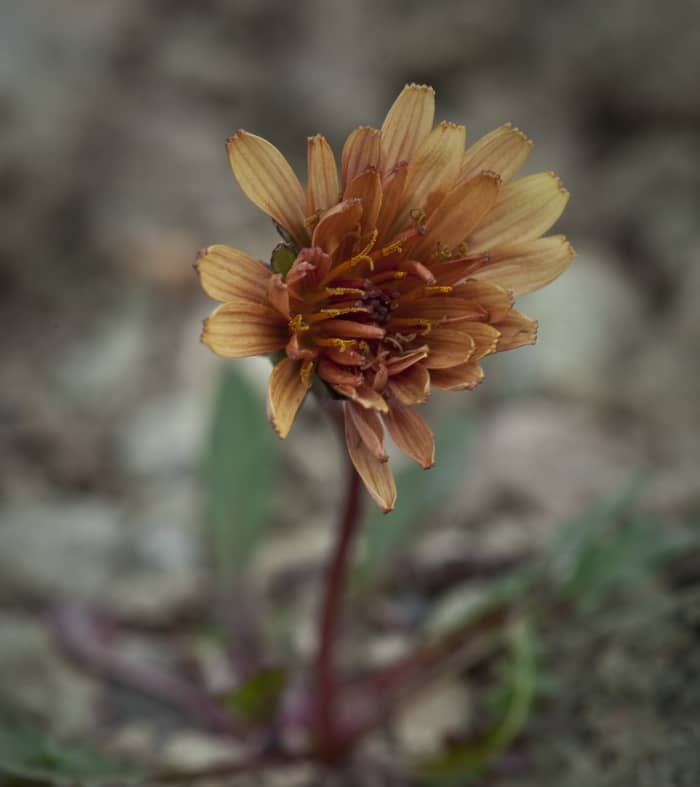
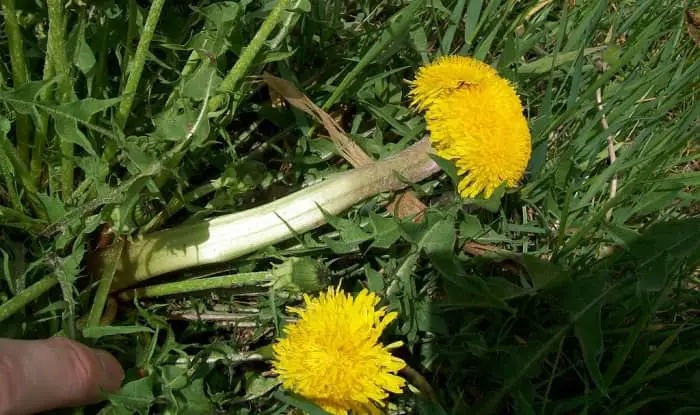
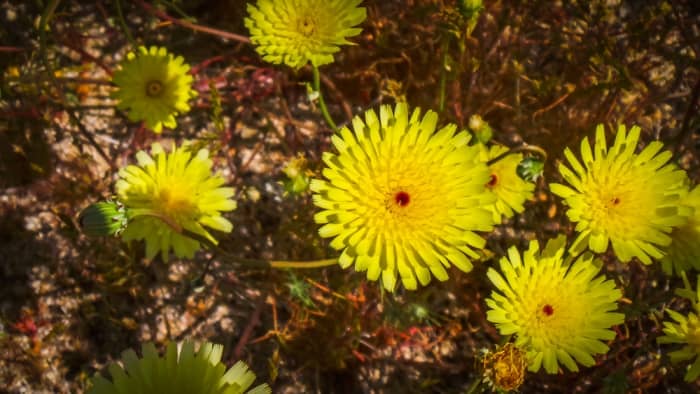
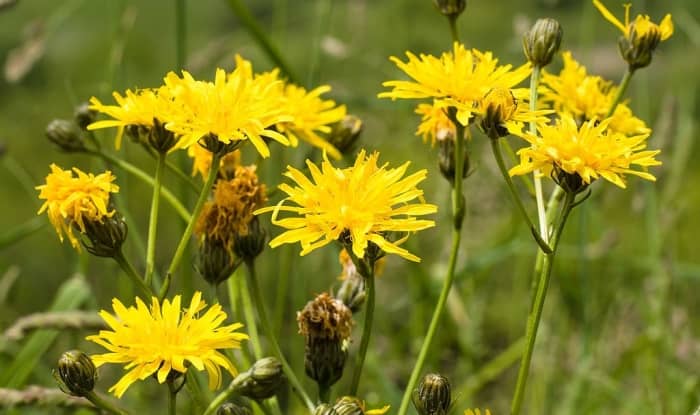
This was quite informative. I only wish there had been more photos of foliage. My plant morphology class, many moons ago, taught us to examine as much of the plant as possible, not just the “fruiting-bodies”, i.e. flowers and fruits/seeds. Most of the Taraxacum-types I see are when they are not in bloom.
I was surprised to find that T. californicum is endangered. I just moved away from So. CA after 23 years in a beachside area where T. californicum was as common a lawn weed, and treated the same, as T. officinale. In fact, it was more common than T. officinale.
TY looking for the leaf formation not flower -Fl coast No of Tampa here.
I have a dandelion like plant that grows to 6 feet and is very sappy. Is this one edible? I’ve been feeding it to my tortoise. I was thinking of eating it myself.
Hi Carrot,
If it grows 6 feet tall and resembles dandelion then it could be wild lettuce (Lactuca virosa) or prickly lettuce (Lactuca serriola). Both are edible, but it’s best to confirm the identity before you try.
I would like to see more pictures of foliage. But overall, it is a good article. Thank you.